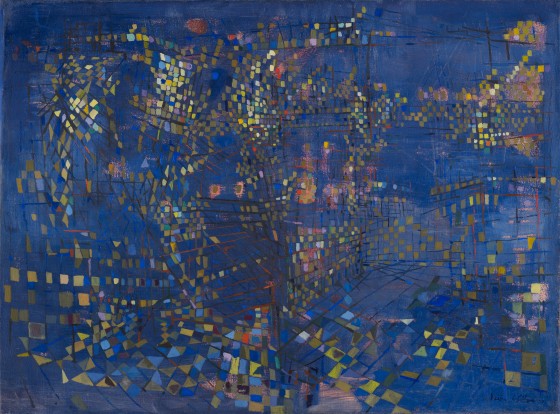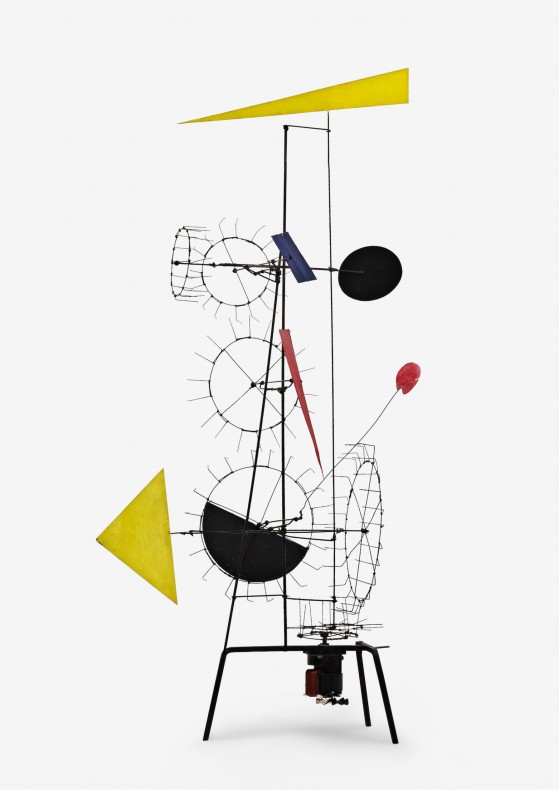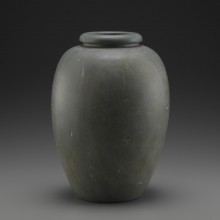
November 2022 Fine Arts
Il s'en fout – Le contre-procès de Lens
Created in 1971, Il s'en fout – Le contre-procès de Lens is one of Gérard Schlosser's few engaged works1. It recalls one of the tragic accidents in French mines that plunged the country into mourning at the time. Not showing the tragedy itself, the artist takes as his subject the funerals held in homage to the deceased miners. On his diptych, he contrasts, on one panel, the pain of the families who lost a loved one, on the other, the boredom of a politician or of the boss of the company who manages the mine, present to support them symbolically.
See the artwork in the collectionGérard Schlosser (Lille, 1931 - Paris, 2022)
Il s'en fout – Le contre-procès de Lens
1971
Acrylic on sanded chipboard panels
Signed, dated, titled and annotated "Schlosser / 1971 / il s'en fout / (diptyque)" on the back of the panel
162 x 260 (diptych)
FGA-BA-SCHLO-0032
Provenance
Donation of the artist to the Fondation Gandur pour l’Art, 2020
Exhibition
Journal d'une veuve de mineur – Vie et mort d'un mineur, Fouquières-lez-Lens 1970, Paris, La maison pour tous, 25.02 – 25.03.1976

The distress of the bereaved families
The opposition between the two scenes depicted by Gérard Schlosser is unequivocal (fig. 1). On the left panel, four crying women support each other in these difficult moments. Their eyes are downcast, their faces are pale. They struggle to contain their emotions as they have undoubtedly lost a husband or a father. Wrapped up in their rather worn-out coats, garments that recall their social condition as women and daughters of miners, their pain seems palpable. The colours of the clothes in the foreground – brown and woad blue – contrast with the black of those in the background. Wearing simple hats or headscarves, these grief-stricken women are far from the sensual women Gérard Schlosser would usually paint around this period. The only element that is nonetheless recurring is the handbag, an almost fetish object that is often found in the artist's work2. But unlike the waiting and beach scenes in which these black leather handbags are at the centre of the compositions, here they are much more simple. Almost blending in with the other elements of the image, they serve above all as social markers.
The only small notes of colour on this panel are a few red and purple flowers at the bottom left that somewhat brighten up the scene. It is however difficult to know if they are part of the funeral wreaths placed on the coffins of the killed miners, which, for their part, remain out of frame.
The disinterest of the ruling classes
On the right panel, the colours are brighter, the framing is tighter. There are no faces visible, no real mourning. Just the torso of a man dressed up to the nines, a black tie over a white shirt and a navy blue suit. In the buttonhole is a red ribbon, the insignia reserved for those who are appointed to the rank of Knight of the Legion of Honour. In the centre of the composition, a gold watch worn on the left wrist of the character. It is matched to his cufflinks, one of which is made visible in Schlosser's acrylic painting: it stands out and emphasizes the class difference between him and the grieving families on the other panel. The slender, well-groomed hand, the pink of its flesh, stands in stark contrast to the black, calloused hands of the miners who died in the firedamp explosion at the Courrière mines in Fouquières-lès-Lens, in northern France, on 4 February 1970. While mine accidents were frequent in that period, "this one was not accepted like the others". Fate did not explain everything for the actors of the time, who thought that "output overall, regardless of the miners' safety"3 was the cause of the fatality.
"I am not a man of action in the militant sense but I try to act in my own way."
The class struggle
Following the accident that cost the lives of sixteen miners and injured twelve others, fire was set to the mine's head offices of the Houillères du Nord, held responsible for the catastrophe. The arrested and accused militants were finally acquitted at the end of a resounding trial. The miners and their families organized themselves "to find out more about the real causes of these accidents"4. They were joined by workers, students, and teachers, as well as by artists who, after exchanges in the miner's cottages, "developed the poster campaign that would support the action of [a] people's court to judge the Houillères crimes" in Lens during the month of December of 1970. It was during that period that the artists were acquainted with the victims' families. The widow of firedamp victim Jean-Pierre Antinori showed them her album of memories, a collection of photographs and press articles. It would later be used as an inspiration by those who gravitated around narrative figuration, among them Gilles Aillaud, Eduardo Arroyo, Gérard Fromanger, Bernard Rancillac and Alessandro Spadari5. The group produced a series of works that would be presented in 1971 at the Salon de la Jeune Peinture in the name of the "Daily reality of mine workers" collective. Although he never considered himself an engaged artist, Gérard Schlosser also undertook a diptych that evokes the different episodes of this tragic event. While the death of the miners functions as a backdrop to the work, the artist’s main interest lies in the "poignant farewell to the victims of the firedamp" – as a newspaper headline at the time put it6 – which brought together 10’000 people during the cold winter of 1970. The painting is directly inspired by a photograph that was reproduced in the local press. The article it was drawn from is preserved in the Journal d'une veuve de mineur (Diary of a Miner's Widow) written by the widow of Jean-Pierre Antinori. Underneath the article cut out and pasted in the Journal, a handwritten caption identifies the people depicted by the artist: "Here, Patricia, Chantal, My Aunt cry because Jean Pierre is in the vault and it is the last time they will see him"7.
Unlike Gérard Fromanger8 or Jean-Paul Chambas9 who did limit themselves to images taken from the Diary of a Miner's Widow, Gérard Schlosser goes further by imagining the second panel of the diptych and the presence of this man – the boss or the politician – who has come to attend the funeral. He thus presents two opposing sides of society in the specific context of the class struggle that was sparked by the aftermath of the May 1968 events. It confronts the distress of the bereaved working class families to the boredom of a man who represents the ruling class. He looks at his watch, without a doubt wondering if the commemoration of the dead will last any longer. The works’ title, which often gives rise to smiles within Gérard Schlosser's work, gives some clues to its interpretation. Il s’en fout (He doesn’t care) summarizes well the disinterest of a specific political class, or of the employing class (patronat in French) to use the terms of the time, that despises the working class. This social fresco and this class confrontation paint a rather dark picture of society as it was towards the end of the Glorious Thirties. The subtitle, Le contre-procès de Lens (The Counter-Trial of Lens), evokes the setting up of a popular tribunal to judge those responsible for this tragic mine accident. It’s thus not one for the working class that denounces pace, output and the unlimited search for profit.

"I am not a man of action in the militant sense but I try to act in my own way", said Gérard Schlosser in 197410. Even if he has never regarded himself as an engaged artist and even if his work is rarely political, Il s'en fout is nevertheless embedded into a continuity. The indifference that he depicts had already been thematized in an earlier work (Untitled, 1968, fig. 2). It represents a holidaymaker at the beach confronted with a dramatic news event – the Prague Spring crushed by the Soviet tanks in August 1968 – which he hears about on the radio while taking advantage of his paid leave to sunbathe on the seaside.
Narrating everyday life, Gérard Schlosser is a painter for whom the human being is at the centre of things, be they banal or linked to historical events. "What makes his paintings so unique and attractive is their frontal nature, a theatricality that is devoid of illusion"11. If class struggle or considerations on mass and consumer society underlie his work, it is above all the narrative aspect that turns out to be an instrument towards a critical dimension12.
Yan Schubert
Curator of the fine arts collection
Fondation Gandur pour l’Art, November 2022
Notes and references
- The artist, who passed this summer, donated the work to the Foundation in December 2020.
- In our collection, which includes some twenty works on canvas produced between 1965 and 1974, the handbag is represented three times.
- JOLIVET, Merri, Journal d'une veuve de mineur, Paris, [s. n.], [1972], non-paginated.
- Ibid.
- All the artists mentioned are part of the collection but we could also have cited Francis Biras, Jean-Paul Chambas, Lucio Fanti, Gadras, Lucien Mathelin, Julio Le Parc, Merri Jolivet, Poncino, Fabio Rieti and Guy de Rougemont.
- JOLIVET, Merri, op. cit., non-paginated.
- There are spelling mistakes in the French original that have intentionally not been transcribed in this present English translation.
- See ARTIÈRES, Philippe; DE CHASSEY, Éric (ed.), Images en lutte, exhibition catalog [Paris, Palais des Beaux-Arts, 21.02 - 20.05.2018], Paris, Beaux-Arts de Paris editions, 2018.
- La Résistance des images, exhibition catalog [Brussels, Patinoire Royale de Bruxelles, 25.04 - 31.07.2015], Brussels, Éditions de la Patinoire Royale, 2015.
- GIBBALl, Jean-Marie, « Entretien avec Gérard Schlosser », in Exit n° 2, 1974, p. 50.
- PESQUÈS, Nicolas, « Gérard Schlosser, romans », in Gérard Schlosser, Rétrospective 1957-2013, catalogue d'exposition [Sens, Musées de Sens, Palais synodal, 23.06 – 08.09.2013 ; Dole, Musée des Beaux-Arts, 28.09.2013 – 26.01.2014], Paris, Somogy éditions d'art, 2013, p. 14.
- Schlosser, 1964-1970, exhibition catalog [Paris, Galerie Thierry Salvador, 17.01 - 23.02.1991], Paris, Galerie Thierry Salvador, 1991, non-paginated.
Bibliography
JOLIVET, Merri, Journal d'une veuve de mineur, Paris, [s. n.], [1972], b/w repr., n. p.
SCHLOSSER, Gérard, HUART-CHOLLEY, Pearl (dir.), Gérard Schlosser, Catalogue raisonné, L'Œuvre peint 1948-2019, Paris, Mare & Martin, 2020, col. repr. p. 41, no. 100







